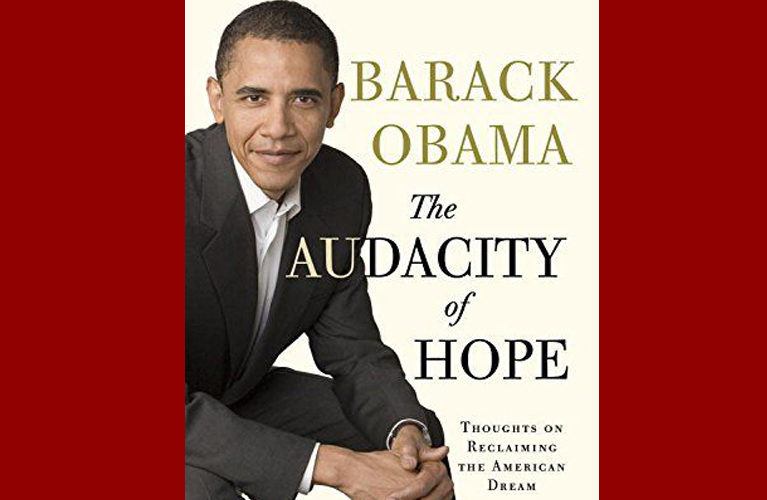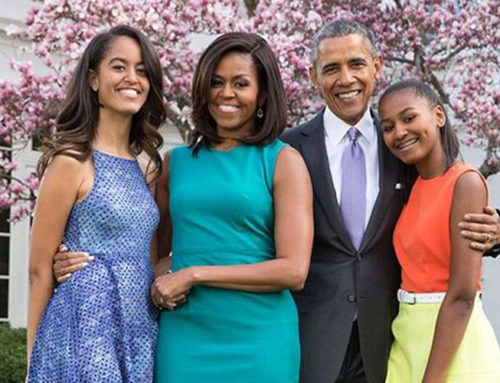FAMILY
tratto da :
Barak H. Obama, The Audacity of Hope
edito da : Crown/Three Rivers Press (2006)
THERE’s A LOT of talk these days about the decline of the American family. Social conservatives claim that the traditional family is under assault from Hollywood movies and gay pride parades. Liberals point to the economic factors (from stagnating wages to inadequate day care) that have put families under increasing duress. Our popular culture feeds the alarm, with tales of women consignated to permanent singlehood, men unwilling to make lasting committments, and teens engaged in endless sexual escapades. Nothing seems settled, as it was in the past ; our roles and relationships all feel up for grabs.
Given this hand-wringing, it may be helpful to step-back and remind ourselves that the institution of marriage isn’t disappeared anytime soon. While it’s true that marriage rates have declined steadily since the 1950s, some of the decline is the result of more Americans delaying marriage to pursue an education or establish a career ; by the age of forty-five, 89 percent of women and 83 percent of men will have tied the knot at least once. Married couples continue to head 67 percent of American families, and the vast majority of Americans still consider marriage to be the best foundation for personal intimacy, economic stability, and child rearing.
Still, there’s no denying that the nature of the family has changed over the last fifty years. Although divorce rates have declined by 21 percent since their peak in the late seventies and early eighties, half of all first marriages still end in divorce. Compared to our grandparents, we’re more tolerant of premarital sex, more likely to cohabit, and more likely to live alone. We’re also far more likely to be raising children in nontraditional households ; 60 percent of all divorces involve children, 33 percent of all children are born out of wedlock, and 34 percent of childrent don’t live with their biological fathers.
These trends are particularly acute in the African American community, where it’s fair to say that the nuclear family is on the verge of collapse. Since 1950, the marriage rate for black women has plummeted from 62 percent to 36 percent. Between 1960 and 1995, the number of African American children living with two married parents dropped by more than half ; today 54 percent of all African American children live in single-parent house-holds, compared to about 23 percent of all white children.
For adults, at least, the effect of these changes is a mixed bag. Research suggests that on average, married couple live healthier, weahlthier and happier lives, but no one claims that man and women benefit from being trapped in bad or abusive marriages. Certainly the decision of increasing numbers of Americans to delay marriages makes sense ; not only does today’s information economy demand more time in school, but studies show that couples who wait until their late twenties or thirties to get married are more likely to stay married than those who marry young.
Whatever the effect on adults, though, these trends haven’t been so good for our children. Many single moms – including the one who raised me – do a heroic job on behalf of their kids. Still, children living with single mothers are five times more likely to be poor than children in two-parents households. Children in single-parent homes are also more likely to drop out of school and become teen parents, even when income is factored out. And the evidence suggests that on average, children who live with both their biological mother and father do better than those who live in stepfamilies or with cohabiting partners.
In light of these facts, policies that strenghten marriage for those who choose it and that discourages unintended births outside of marriage are sensible goals to pursue. For example, most people agree that neither federal welfare programs nor the tax code should penalize married couples ; these aspects of welfare reform enacted under Clinton and those elements of the Bush tax plan that reduced the marriage penalty enjoy strong bipartisan support.
The same goes for teen pregnancy prevention. Everyone agrees that teen pregnancies place both mother and child at risk for all sort of problems. Since 1990, the teen pregnancy rate has dropped by 28 percent, an unadulterated piece of good news. But teens still account for almost a quarter of out-of-wedlock births, and teen mothers are more likely to have additional out-of-wedlock births as they get older. Community-based programs that have a proven track record in preventing unwanted pregnancies – both by encouraging abstinence and by promoting the proper use of contraception – deserve broad support.
Finally, preliminary research shows that marriage education workshops can make a real difference in helping married couples stay together and in encouraging unmarried couples who are living together to form a more lasting bond. Expanding access to such services to low-income couples, perhaps in concert with job training and placement, medical coverage, and other services already available, should be something everybody can agree on.
But for many social conservatives, these commonsense approaches don’t go far enough. They want a return to a bygone era, in which sexuality outside of marriage was subject to both punishment and shame, obtaining a divorce was fare more difficult, and marriage offered not merely personal fulfillment but also well-defined social roles for man and for women. In their view, any government policy that appears to reward or even express neutrality toward what they consider to be immoral behaviour – whether providing birth control to young people, abortion services to women, welfare support for unwed mothers, or legal recognition of same-sex unions – inherently devalues the marital bond. Such policies take us one step closer, the argument goes, to a brave new world in which gender differences have been erased, sex is purely recreational, marriage is disposable, motherhood is an inconvenience, and civilization itself rests on shifting sands.
I understand the impulse to restore a sense of order to a culture that’s constantly in a flux. And I certainly appreciate the desire of parents to shield their children from values they consider unwholesome ; it’s a feeling I often share when I listen to the lyrics of songs on the radio.
But all in all, I have little sympathy for those who would enlist the government in the task of enforcing sexual morality. Like most Americans, I consider decisions about sex, marriage, divorce, and childbearing to be highly personal – at the very core of our system of individual liberty. Where such personal decisions raise the prospect of significant harm to others – as is true with child abuse, incest, bigamy, domestic violence, or failure to pay child support – society has a right and duty to step in. (Those who believe in the personhood of fetus would put abortion in this category). Beyond that, I have no interest in seeing the president, Congress, or a government bureaucracy regulating what goes on in America’s bedrooms.
Moreover, I don’t believe we strenghten the family by bullying or coercing people into the relationships we think are best for them – or by punishing those who fail to meet our standards of sexual propriety. I want to encourage young people to show more reverence towards sex and intimacy, and I applaud parents, congregations, and community programs that transmit that message. But I’m not willing to consign a teenage girl to a life-time of struggle because of lack of access to birth control. I want couples to understand the value of commitment and the sacrifices marriage entails. But I’m not willing to use the force of law to keep couples together regardless of their personal circumstances.
Perhaps I just find the ways of the human heart too various, and my own life too imperfect, to believe myself qualified to serve as anyone’s moral arbiter. I do know that in our fourteen years of marriage, Michelle and I have never had an argument as a result of what other people are doing in their personal lives.
When we have argued about – repeatedly – is how to balance work and family in a way that’s equitable to Michelle and good for our children. We’re not alone in this. In the sixties and early seventies, the household Michelle grew up in was the norm – more than 70 percent of families had Mom at home and relied on Dad as the sole breadwinner.
Today those numbers are reversed. Seventy percent of families with children are headed by two working parents or a single working parent. The result has been what my policy director and work-family expert Karen Kornbluh calls « the juggler family », in which parents struggle to pay the bills, look after their children, maintain a household, and maintain their relationship. Keeping all these balls in the air takes its toll on family life. As Karen explained when she was director of the Work and Family Program of the New America Foundation and testified before the Senate Subcommittee on Children and Families :
« Americans today have 22 fewer hours a week to spend with their kids than they did in 1969. Millions of childred are left unlicensed day care every day – or at home alone with the TV as a babysitter. Employed mothers lose almost an hour of sleep a day in their attempt to make it all add up. Recent data show that parents with school age children show high signs of stress – stress that has an impact on their productivity and work – when they have inflexible jobs and unstable after-schoool care».
Sounds familiar ?
Many social conservatives suggest that this flood of women out of the home and into the workplace is a direct consequence of feminist ideology, and hence can be reversed if women will just come to their senses and return to their traditional home-making roles. It’s true that ideas about equality for women have played a critical role in the transformation of the workplace ; in the minds of most Americans, the opportunity for women to pursue careers, achieve economic independence, and realize thier talents on an equal footing with men has been one of the great achievements of modern life.
But for the average American women, the decision to work isn’t simply a method of changing attitudes. It’s a matter of making ends meet.
Consider the facts. Over the last thirty years[1], the average earnings of American men have grown less than 1 percent after being adjusted for inflation. Meanwhile, the cost of everything, from housing to health-care to education, has steadily risen. What has kept a large swath of American families from falling out of the middle class has been Mom’s paycheck. In their book The Two-Income Trap, Elizabeth Warren and Amelia Tyagi point out that the additional income mothers bring home isn’t going to luxury items. Instead, almost all of it goes to purchase what families believe to be investments in their childrens’ future – preschool education, college tuition and, most of all, home in safe neighborhoods with good public schools. In fact, between these fixed costs and the added expenses of a working mother (particularly day care and second car), the average two-income family has less discretionary income – and is less financially secure – than its single-earner counterpart thirty years ago.
So it is possible for the average family to return to life on a single income ? Not when every other family on the block is earning two incomes and bidding up the prices of homes, schools, and college tuition. Warren and Tyagi show that an average single-earner family today that tried to maintain a middle class lifestyle would have 60 percent less discretionary income than its 1970s counterpart. In other words, for most families, having Mom stay at home means living in a less-safe neighborhood and enrolling their children in a less-competitive school.
That’s not a choice most Americans are willing to make. Instead, they do the best they can under the circumstances, knowing that the type of household they grew up in – <…> – has become much, much harder to sustain.
– – – –
BOTH MEN AND women have had to adjust to these new realities. But it’s hard to argue with Michelle when she insists that the burdens of the modern family fall more heavily on the women.
For the first few years of our marriage, Michelle and I went through the usual adjustments all couples go through : learning to read each other’s moods, accepting the quirks and habits of a stranger underfoot. Michelle liked to wake up early and could barely keep her eyes open after ten o’clock. I was a night owl and could be a bit grumpy (mean, Michelle would say) within the first half hour or so of getting out of bed. Partly because I was still working on my first book, and perhaps because I had lived much of my life as an only child, I would often spend the evening holed up in my office in the back of our railroad apartment ; what I considered normal often left Michelle feeling lonely. I invariably left the butter out after breakfast and forgot to twist the little tie around the bread bag ; Michelle could rack up parking tickets like nobody’s business.
Mostly, though, those early years were full of ordinary pleasures – going to movies, having dinner with friends, catching the occasional concert. We were both working hard : I was a practicing law at a small civil rights firm and had started teaching at the University of Chicago Law School, while Michelle had decided to leave her law practice, first to work in Chicago’s Department of Planning and then to run the Chicago arm of a national service program called Public Allies. Our time together got squeezed even more when I ran for the state legislature, but despite my lenght absences and her general dislike of politics, Michelle supported the decisions ; « I know it’s something that you want to do », she would tell me. On the nights that I was in Springfield, we’d talk and laugh over the phone, sharing the humor and frustrations of our days apart, and I would fall asleep content in the knowledge of our love.
<…>
Barak H. Obama is the Nobel Prize of Peace 2009 and has served as the XLIV President of the United States of America
This post is published with the courtesy of Obama’s family
[1] note of myZaman : from the first Oil crisis in the 1970 and the decision of president Nixon to abandon a gold « peg » for the US dollar








